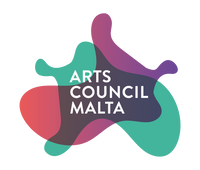ĠużèBonnici
Biography
Ġużè Bonnici was born in Valletta on the 14th of August 1907 and died suddenly 33 years later on the 6th of October 1940. He studied at the Gozo Seminary and the University of Malta, where he graduated as a doctor in 1931. Not long after, he was appointed Head of Department at the Central Hospital.
Jump to bibliography
Bonnici championed the Maltese vernacular when most people were either for the English or Italian language. To this effect, he published two science books in Maltese: It-Trobbija tat-Tfal (“Raising Children”, 1932) and Il-Ġmiel ta’ Ġisimna (“Our Beautiful Body”, 1939).
In 1931, together with fellow doctor Rużar Briffa, Bonnici founded the Għaqda tal-Malti (Università) (“Society of Maltese (University)”) to establish the Maltese language as a means of fostering culture and intellectual engagement. For a time, he was also the editor of the Society’s journal Leħen il-Malti (“The Maltese Voice”), whose first issue was published in March of 1931.
In 1938, Bonnici bought a publishing house out of his own pocket: Dar tal-Pubblikazzjoni Excelsior in Valletta. During his brief tenure he published a remarkable number of works by canonical authors like Ġużè Aquilina, Ġużè Ellul Mercer, Ġużè Galea and Dun Karm. Additionally, Bonnici also published his own Il-Qawwa tal-Imħabba (“The Power of Love”) and Ħelsien (“Freedom”).
Bonnici was also very active in politics with The Malta Labour Party. Between 1926 and 1929, he held posts as party delegate, member of the executive committee, and Valletta district secretary. In 1931, he wrote L-Istorja tal-Partit tal-Ħaddiema (“The History of the Workers’ Party”), a book that covered the first ten years of the Labour Party.
As a writer of prose, Bonnici approached social life in his short stories from a distinct perspective, interweaving social realism with psychological undertones. This positioned him in a literary grey area, which, in hindsight, prevented him from garnering the deserved recognition for his Modernist approach.
It is easy to see why critics found placing him within the social realist movement easier and more convenient. In stories like “Toninu” and “Paċikku”, realism is a significant tool for setting up the story. Bonnici describes the world in which the two eponymous characters live in meticulous detail, as he does with the customs and beliefs that dominated society at the time. In this regard, Bonnici makes no effort to hide his medical bias. He dismisses homemade remedies, hearsay and superstition in one fell swoop. He asserts that seeking refuge in these, rather than medical intervention, will assuredly lead to dire consequences.
When one compares these two short stories with “Mita tħobb” (“When one loves”) the difference is remarkable. Bonnici captures the complexities of the characters’ inner thoughts and emotions, reflecting the psychological realism characteristic of modern literature. Additionally, the story addresses contemporary themes and cultural and societal changes such as the growing rift between rural and urban life. The meticulous use of the symbolism of bells contributes further to modern aesthetics, inviting the reader to interpret multiple layers of meaning.
In conclusion, one could say that Bonnici’s exploration of realism, consciousness, identity and the human condition exemplifies the innovative and experimental spirit that characterised modern short stories.
Biography written by Noel Tanti
